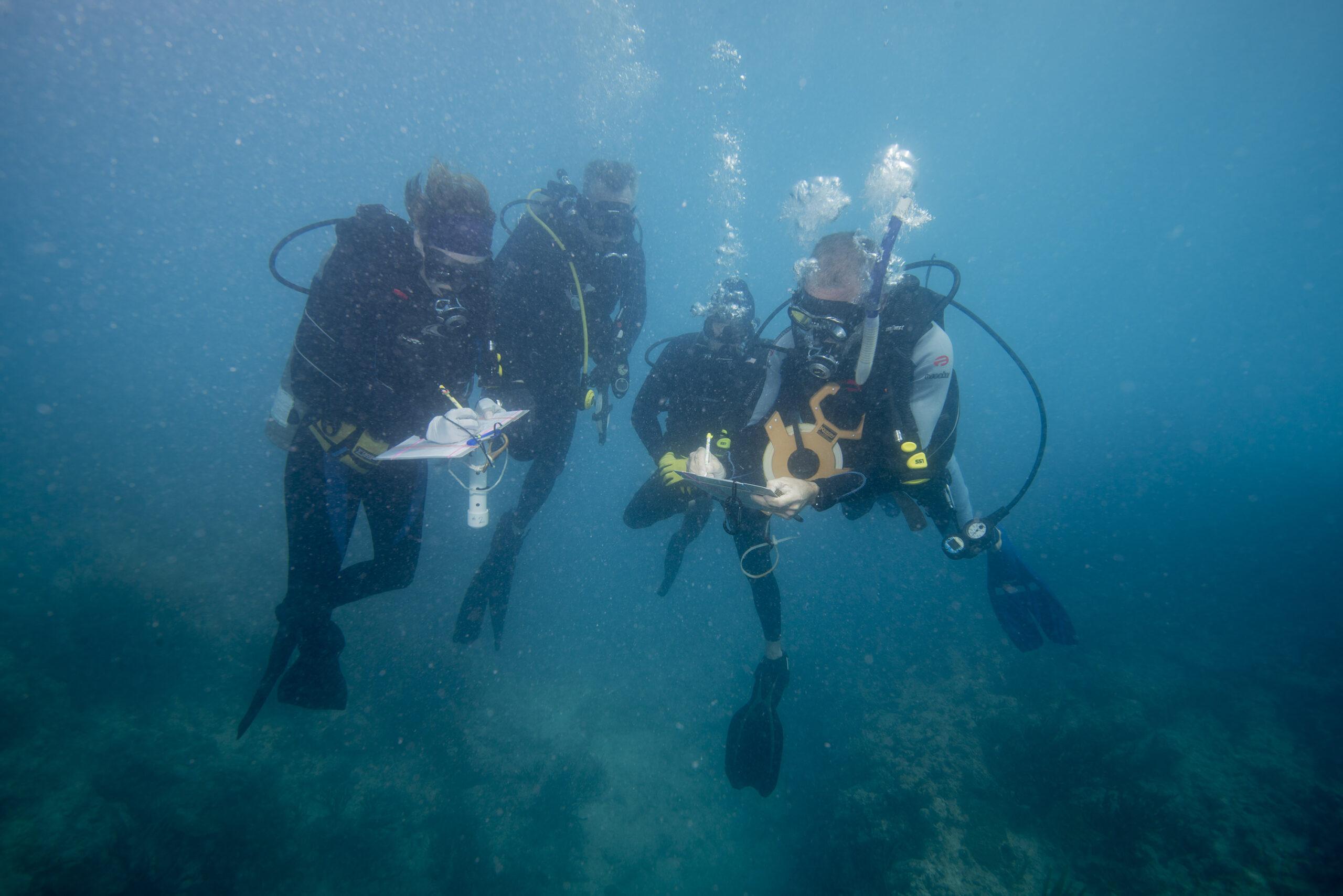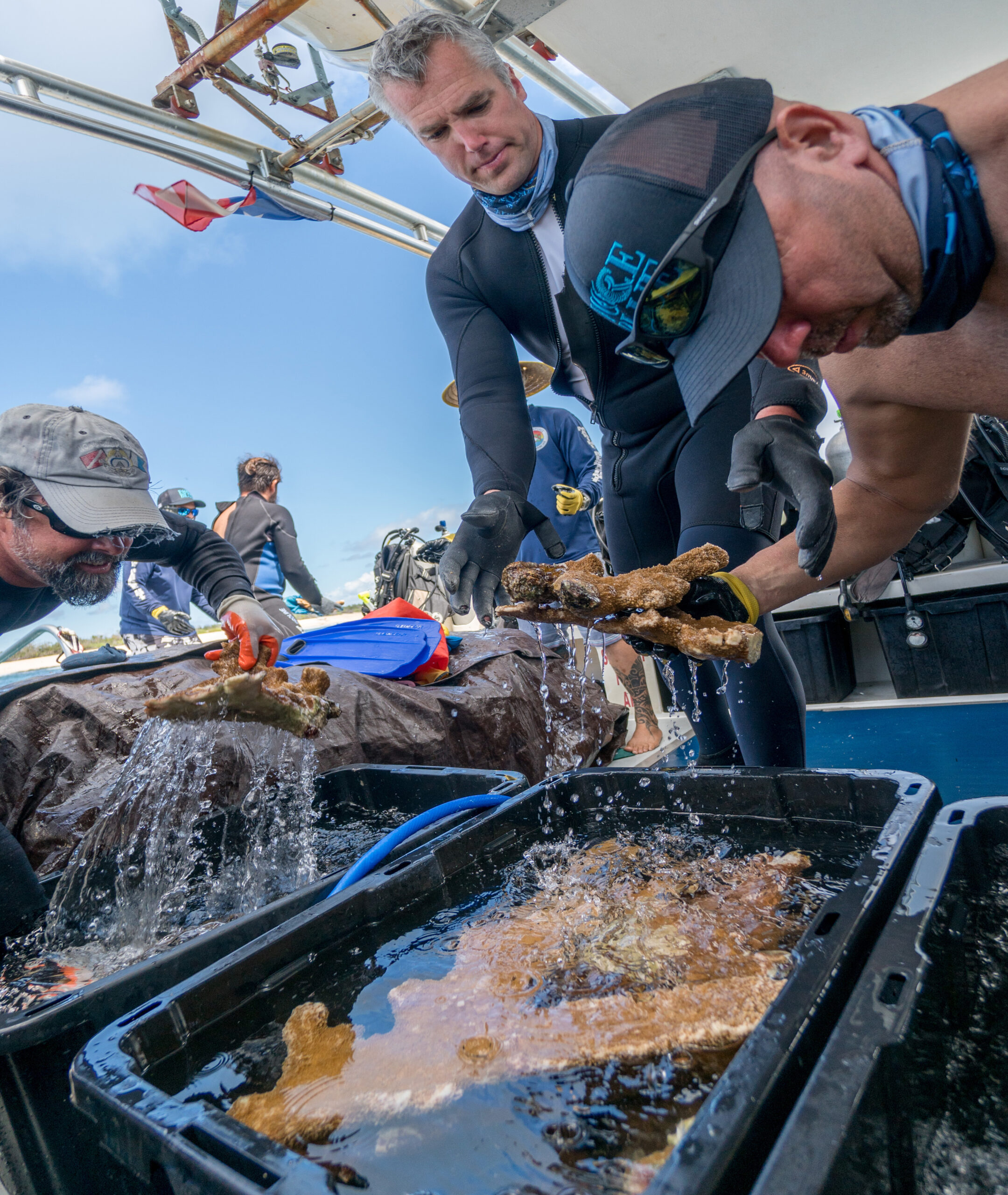The Recon Force of the Ocean
The second installment of our “Force Blue Friday” blog series this May, celebrating our partnership with these amazing veterans and their mission in honor of National Military Appreciation Month.

Ocean Conservancy recently embarked on a partnership with Force Blue to support a coral restoration mission in Puerto Rico. Nathan Quinn, a member of Force Blue Team One deployed to Puerto Rico to assist NOAA, Sea Ventures and Puerto Rico’s Department of Natural Resources in October and has been there since. The Florida native and U.S. Army Veteran and Military Medic Instructor took some time to speak with us about his time in Puerto Rico. This is the second part of a four-part interview series. Click here to read the first installment.
Michael Farnham: What have you learned about corals and the ecosystem they support that you believe is important for the public to understand?
Nathan Quinn: During Force Blue’s training in the Cayman’s we received a level of training that doesn’t exist anywhere else. All of our instructors were in the diving hall of fame or are otherwise leaders in their field. We’ve been able to continue that level of training in Florida with groups like NOAA and the Coral Restoration Foundation and continuous on the job training with the Ocean Conservancy, Sea Ventures and the incredible people of Puerto Rico’s Department of Natural and Environmental Resources.
When you realize how integral coral reefs are to the survival of life on the planet it almost feels it’s impossible that you didn’t know it before. One quarter of marine life depends upon them and that web of life gives us more than 50% of the oxygen we breathe. Every year America’s reefs pump billions of dollars into our economy in all kinds of ways from the fish on our plates to the medicines in our cabinets. In addition, they add an incalculable value by reducing coastal erosion and absorbing the impact of storms that would otherwise make landfall with all the might they’ve accumulated in their thousand mile journey across the ocean. Our coasts, our country, would be in a very different and perilous state without them. Force Blue, the Ocean Conservancy, NOAA- our job is to make sure that doesn’t happen.
Farnham: Can you describe the work you and the team have done?
Quinn: Our day begins at 6 a.m., getting a little physical training in and making breakfast before the drive to the port and a quick meeting at 8 a.m. as we get the boat loaded with Scuba tanks, concrete and other supplies for the day. Due to weather and other variables we often aren’t sure where we are headed until we leave the channel and see what the day has in store for us. When we arrive at the site of the day we have four main tasks:
- Recon– looking at unvisited sites to see if there is an opportunity to help
- Cache– finding fragments of opportunity – pieces of coral that have broken free and will die without our help- and bringing them to a central collection point.
- Transport– bringing the coral from the ocean to the boat from a site that is unsuitable for attachment. We then shade and cycle the new water on this coral until we reach a suitable site for reattachment.
- Attachment– using mainly cement though occasionally epoxy or a combination of those materials and nails or zip ties we attach the coral in a carefully chosen place taking note of a number of factors that will aid in its recovery including depth, light, currents, growth rate, and proximity to same or different species.

Every day is a bit different but most include two or three of these tasks and we will spend between four and seven hours in the water working as long as weather and light will allow. On average, the team can find, rescue, transport and attach 100 pieces of coral a day. Imagine what two teams could do!
The next morning, we get up and do it again unless the weather gets so bad as to force a day off.
Farnham: What it is like to work with NOAA scientists on a daily basis? Force Blue Co-Founder / Director, Rudy Reyes calls them the Recon force of the oceans – can you talk about your experience with them and what they do on a daily basis?
Quinn: I think, in many respects, the NOAA scientists we’ve worked with are the unsung heroes of the marine conservation world. They are the ones who are out there, daily, doing the hard work that needs to be done. They are the planet’s eyes and ears, conducting the research and building the projections that allow groups like Force Blue, the Ocean Conservancy and Sea Ventures to get involved and make a difference.